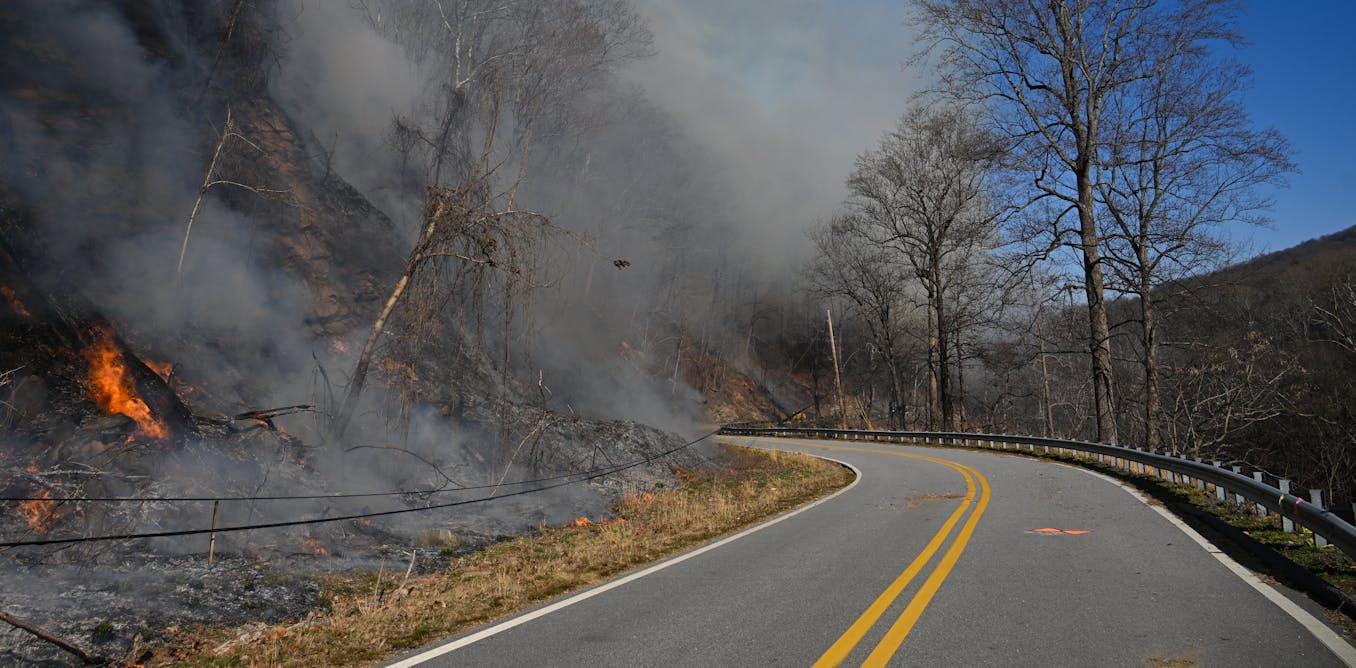Weather Whiplash: The Wildfire Crisis in the Carolinas
In recent years, North Carolina has been caught in the grip of what many are calling “weather whiplash”—a phenomenon characterized by rapid shifts between extreme weather events. From devastating droughts to hurricanes that unleash torrential floods, the state’s climate extremes have set the stage for an alarming wildfire crisis. Understanding how these chaotic weather patterns affect the environment and the lives of residents is crucial, especially as climate change continues to challenge traditional weather norms.
The Landscape of Wildfires in North Carolina
Wildfires are not a new occurrence in North Carolina, but their frequency and intensity have escalated, leading to significant ecological and economic consequences. The state’s diverse ecosystems, which include coastal plains, mountainous regions, and extensive forests, are under increasing threat. According to the North Carolina Forest Service, the state has experienced an uptick in wildfire activity, with numerous acres burned annually, impacting air quality and wildlife habitats.
One major driver of this increase in wildfires is the fluctuation between periods of extreme drought and excessive rainfall. When dry spells occur, vegetation becomes parched and highly flammable, creating ideal conditions for wildfires. Conversely, heavy rainfall can lead to lush growth, which, when it dies off, contributes to an increased fuel load on the forest floor. This cycle of wet and dry weather—often exacerbated by climate change—has resulted in a perilous situation for North Carolina’s forests and communities.
Understanding Climate Extremes: Droughts and Floods
The term “weather whiplash” aptly describes the rapid transitions between drought and flood that North Carolina has faced over recent years. During severe drought periods, the state has witnessed:
- Increased Fire Risk: Drought conditions dry out vegetation, making it highly susceptible to ignition.
- Agricultural Strain: Farmers face challenges in crop yield and livestock health due to water shortages.
- Water Resource Challenges: Lakes and rivers may reach critically low levels, affecting both drinking water supplies and ecosystems.
Conversely, the aftermath of hurricanes often brings torrential rains and floods, causing soil erosion and water saturation that can exacerbate existing wildfire risks. The interplay between these two extremes creates a volatile environment, complicating firefighting efforts and community preparedness.
The Role of Climate Change
Climate change is a significant factor contributing to the increasing severity of weather extremes in North Carolina. Rising global temperatures lead to more frequent and intense weather events, including droughts and hurricanes. According to a report by the North Carolina Climate Science Report, the state is projected to experience:
- Higher Average Temperatures: Increasing temperatures can lead to prolonged dry spells, further enhancing wildfire risks.
- Changes in Precipitation Patterns: Altered rainfall patterns complicate water resource management and increase the likelihood of flooding.
- More Intense Storms: As hurricanes grow stronger, the potential for flooding and subsequent fire risks increases.
Impacts on Residents and Ecosystems
The implications of weather whiplash stretch far beyond the natural environment; they touch the lives of residents and local economies. Communities in North Carolina are facing challenges that include:
- Health Risks: Wildfires lead to poor air quality, which can exacerbate respiratory issues among vulnerable populations.
- Economic Consequences: The cost of firefighting efforts, along with damages to homes and businesses, can strain local economies.
- Displacement: As wildfires encroach on residential areas, evacuation becomes necessary, leading to displacement and loss of property.
Moreover, ecosystems are suffering from the dual threats of increased wildfire activity and climate extremes. Wildlife habitats are destroyed, and the delicate balance of flora and fauna is disrupted, resulting in long-term ecological consequences. The North Carolina Wildlife Resources Commission highlights the importance of preserving these habitats not only for biodiversity but also for the overall health of the environment.
Mitigation Strategies and Community Resilience
While the challenges posed by weather whiplash and wildfires are significant, there are also opportunities for communities to adapt and build resilience. Some strategies include:
- Fire Management Practices: Implementing controlled burns and forest thinning can help reduce fuel loads and mitigate wildfire risks.
- Community Education: Raising awareness about fire risks and preparedness can empower residents to take proactive measures.
- Sustainable Land Use Planning: Developing land use policies that consider climate projections and fire risks can help in urban planning and zoning decisions.
Furthermore, collaboration with local, state, and federal agencies is vital. Programs that encourage community engagement—such as firewise initiatives—can help residents understand how to better protect their homes and neighborhoods from wildfires.
Looking Ahead: A Call to Action
As North Carolina navigates the complexities of climate extremes and the wildfire crisis, it is crucial for residents, policymakers, and environmental organizations to work together toward sustainable solutions. Embracing innovative practices in land management, fostering community engagement, and advocating for climate-resilient policies are steps that can lead to a safer future.
The path forward may be fraught with challenges, but with proactive measures and a collective commitment to understanding and addressing the impacts of weather whiplash, North Carolina can emerge more resilient than ever. The state’s rich natural heritage and vibrant communities deserve every effort to ensure their safety and sustainability amid the complexities of a changing climate.
See more Your Daily Weather



